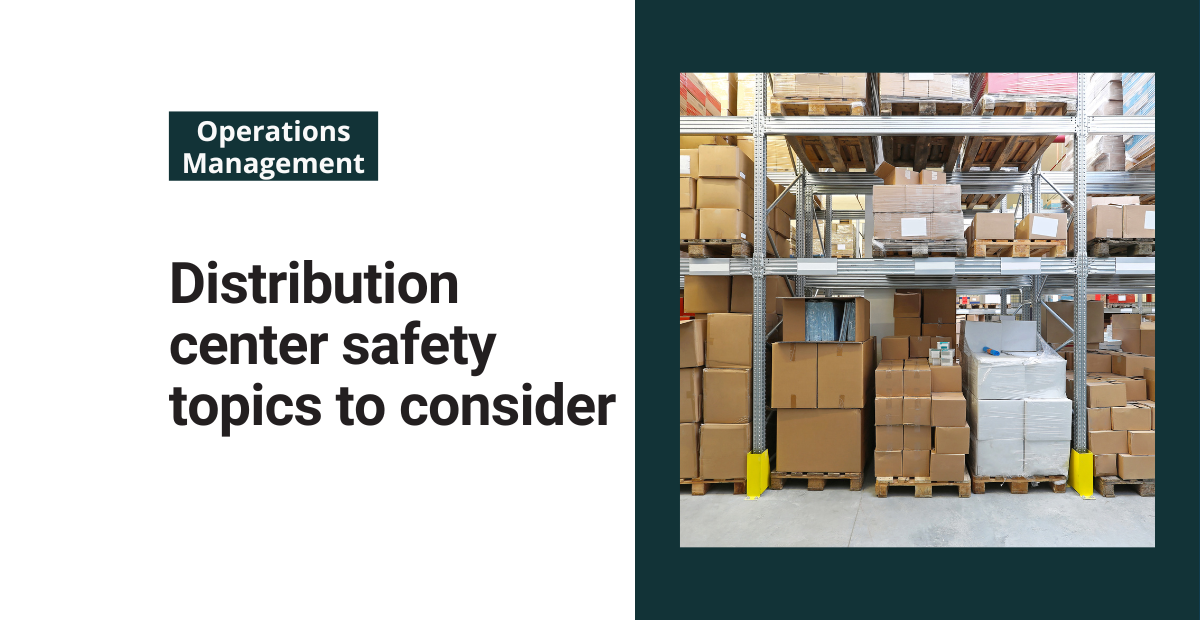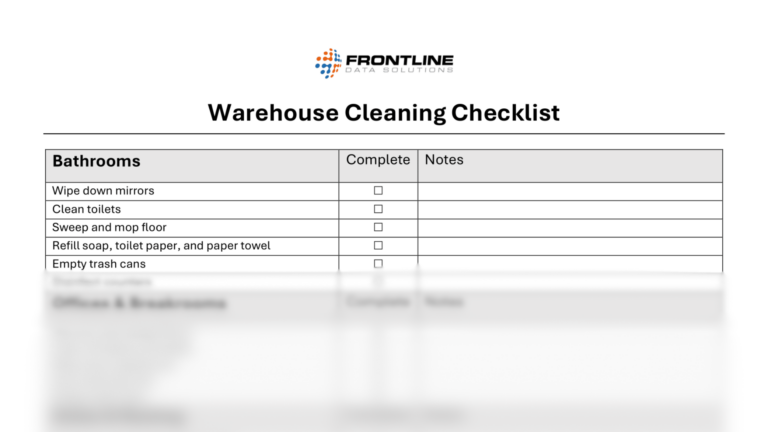OSHA standards and best practices apply to logistics operations as much as they do to more high-risk industries. Among various distribution center safety topics, small companies, as well as large companies like Amazon (whose fulfillment centers occupy more than 150 million square feet of space), are held equally responsible for the safety of their workforce.
Managers run safe operations by setting the right agenda of safety initiatives to prevent workplace accidents and injuries. In this post, I’ll break down some of the distribution center safety topics that all facility managers need to consider when creating their safety programs.
Free checklist!
Download this free warehouse cleaning checklist to make sure your facility stays in top shape.
Distribution center safety: Safe lifting
In most distribution center environments, team members regularly lift objects of varying weights. However, if they don’t follow proper lifting techniques, they increase their risk of injury.
As a result, these injuries can range in severity and impact multiple parts of the body. Basically, to help prevent them, here are a few steps you can take to encourage safe lifting habits:
- Develop a daily stretching routine for all teams
- Provide general ergonomics and task-specific lifting training
- Provide mechanical lifting aids (dollies, pallet jacks, etc.)
- Utilize design and engineering to minimize the need for lifting
Powered industrial equipment
Typically, distribution centers have multiple types of PIT equipment (forklifts, reach trucks, etc.) operating simultaneously. This equipment can be extremely dangerous, causing not only injuries but property and inventory damage as well.
You can find OSHA’s regulations for powered industrial equipment training here, but this regulation should only be the starting point for your PIT training program. Some key actions you can take on this topic include:
- Having experienced PIT operators train and routinely evaluate new operators
- Limiting the maximum speed of your PIT equipment (5 mph is a common limit)
- Establishing safe procedures for selecting, stacking, and putting loads down
- Requiring operators to perform forklift inspections at least once per shift
Distribution center safety: Hazard communication (HazCom)
Distribution center workers may come across hazardous chemicals or other substances via the freight that comes in and out of the facility. Therefore, OSHA regulates HazCom training through the GHS Program with requirements around labeling, pictograms, safety data sheets, and training.
Make sure your HazCom program covers these main topics:
- Basics of hazard classification
- Physical properties of hazardous chemicals
- Safety data sheets
- Labeling requirements
- Handling hazardous materials
Conveyor belts
Conveyor belt systems are essential to distribution center operations, helping move inventory from one place to another. And while they’re extremely useful tools, they can also present major hazards to your team members.
For example, these hazards include being caught in pinch points, being struck by falling objects, and sustaining repetitive motion injuries from working in awkward positions. Key topics to cover in this area of safety include:
- Performing regular conveyer belt inspections
- Placing guards around pinch points
- Training workers on lockout/tagout policies and procedures
- Ensuring that emergency stops work properly
- Keeping the area underneath conveyors clear of trash
Dock safety
Most distribution centers have dock doors for trucks to load and unload inventory. As such, dock safety should be a part of your training program. Additionally, you should have some sort of dock lock system in place to prevent injuries.
Train your workers how to safely engage dock locks as part of your site-specific training. Other equipment such as dock ladders and stairs fall under OSHA regulations, so make sure your training in those areas is compliant as well.
Here are some other distribution center dock safety topics to cover:
- Forklift operations on the docks
- Dock jumping
- Dock plate security
- Dock lock system
If you want to build a successful EHS program at your distribution center, make sure you thoroughly cover the safety topics in this list. Therefore, through proper training, regular auditing, and constant reiteration, you’ll create a system that lasts for the long haul.





